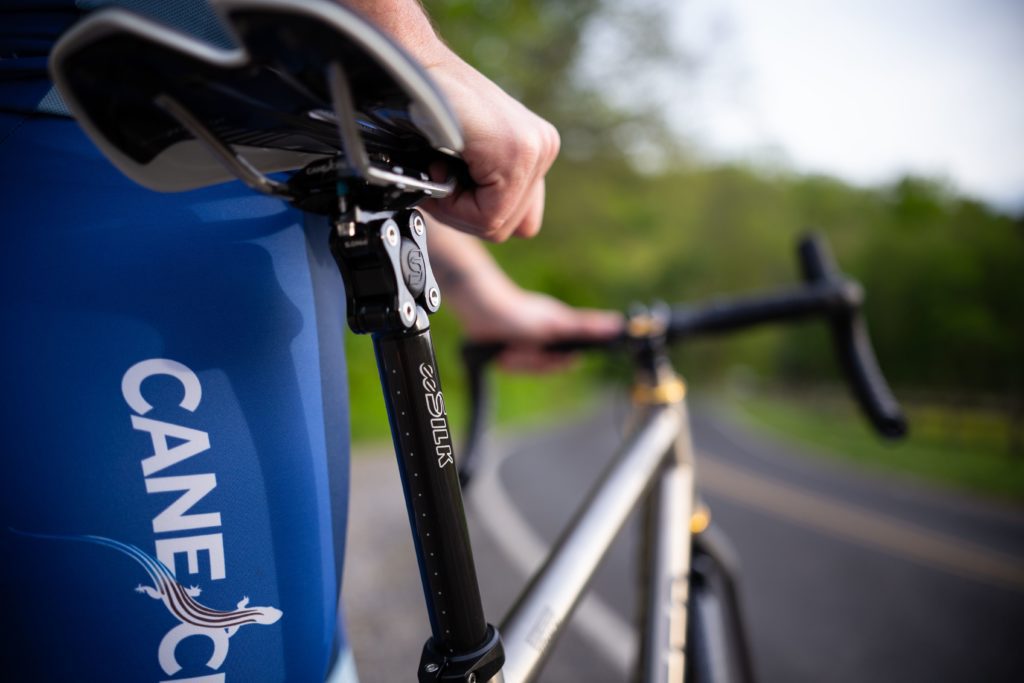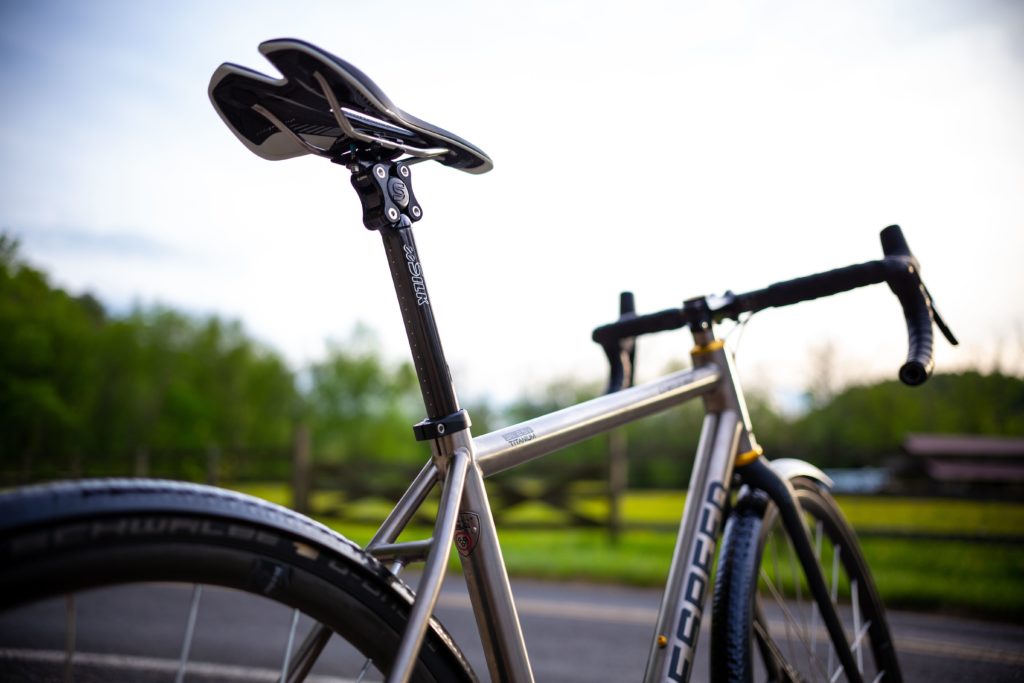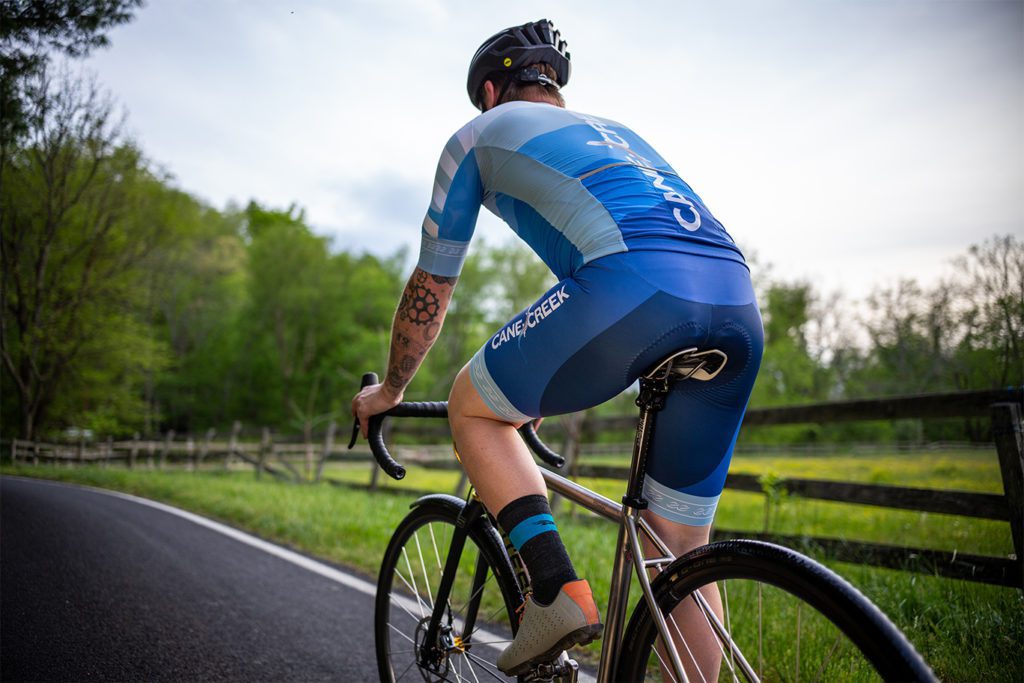

Brent Graves – President & CEO
At the outset I will admit that the following may sound a bit like a sales pitch, and that would be the antithesis to the intent of these blogs. However, I’d argue that I am candidly sharing my perspective on the topic, and as such, I am being true to the Being Frank concept. Read and you can decide.
This week Cane Creek is introducing a new eeSilk seat post. The first eeSilk was launched in 2018, and it was intended to reduce rider fatigue by knocking the edge off impacts before they reach the body and transmit up the spine. While not providing the amount of travel as our Thudbuster posts, the eeSilk is a more compact design that weighs less than half of those posts and is much better suited for endurance and all-road bikes.
The new eeSilk’s function and basic design are unchanged. What is new is the pivot design. We’ve changed the pivots from hollow hard anodized aluminum to solid stainless axles, moved the bushings to the post from the arms, and changed to a different bushing material all to minimize the chance for play and noise. After making these changes we have tested the posts in the lab and on the road for nearly a year, and we are very pleased that they made the improvement we sought. The other news is that forging the parts has enabled us to lower the price of the aluminum model significantly, and we are adding a model with a carbon shaft.

For decades the study of NVH (noise, vibration, harshness) has been critical in spacecraft, automobile, and airplane design. In essence, NVH increases fatigue that can affect our motor skills and concentration, not to mention it does not leave one refreshed. NVH also consumes valuable energy as our bodies try to minimize its impact (some pun there). This energy is energy that is no longer available to propel us faster or further on our bikes. Last month Cycling Tips published an article about the research Timothy Holsgrove and others from the University of Exeter in England have been doing in this area, and they suggest we underestimate what vibration does to the body.
Over the last decade bicycle companies have worked on various road frame designs to address NVH. From full suspension to embedded elastomers and magic carbon fiber layups and other ideas, companies have sought to make bikes ride smoother without undue weight and complexity. Some of these are little more than marketing hype, but some do provide riders a smoother ride. But to benefit one must buy a new bike or at least a frame with the compliance features built-in, whereas similar rider benefit can be had for a fraction of the cost by adding an eeSilk post to a standard frame. Plus, with the compliance feature isolated in the eeSilk post, the frame has no added weight, stiffness, or durability concerns. An eeSilk equipped bike sprints, descends, and climbs out of the saddle with no compromise.
Gravel riding is increasingly popular, particularly in the U.S. If your gravel time consists of connecting great backroads on your road bike with 28-32c tires when the pavement ends, then an eeSilk could be a great add. If you have a dedicated gravel bike with 35c tires or greater and most or all of your riding is off-pavement, then an eeSilk post will not offer as much noticeable compliance. And if you are seeking to make singletrack more challenging by riding a drop-bar bike, then a dropper post is likely a better bet. But for a large number of riders wanting to get away from traffic by riding paved, dirt, and gravel backroads in various states of disrepair, an eeSilk may be just the ticket.

Monday: 10:00 am – 5:00 pm
Tuesday – Thursday: 10:00 am – 5:00 pm
Friday: 10:00 am – 5:00 pm
Saturday – Sunday: Closed